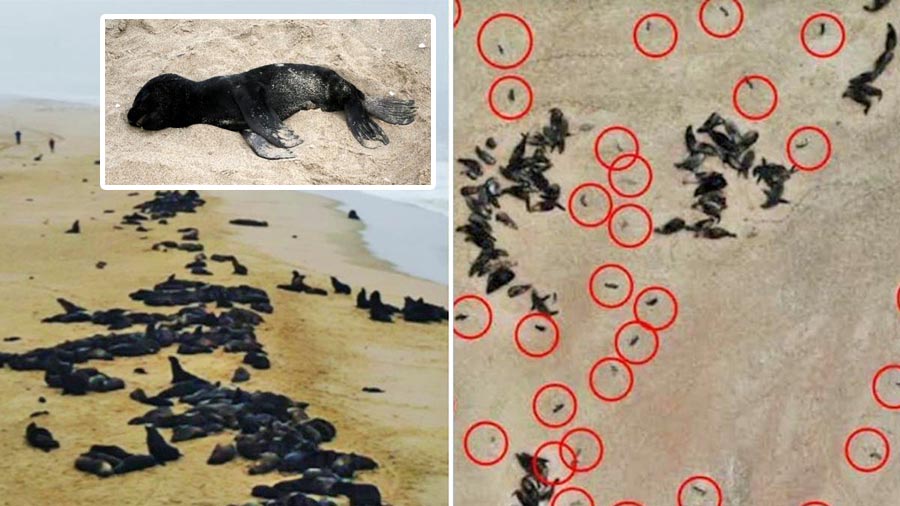Sun 25 October 2020:
An estimated 7,000 Cape fur seals have been discovered dead at a breeding colony in central Namibia.
Conservationist Naude Dreyer of the charity Ocean Conservation Namibia (OCN) began noticing dead seals on the sandy beaches of Pelican Point colony – a tourist destination known for its colony of seals and schools of dolphins – near Walvis Bay city in September.
In the first two weeks of October, he found large numbers of seal foetuses at the colony.
Tess Gridley from the Namibian Dolphin Project estimated that between 5,000 and 7,000 female seals had miscarried young with more still being found.
Last week, there was a spike in the number of dead adult females, Dreyer said.
“What we have been observing is less freshly dead seal pups and a lot of dead female adults,” he said.
The cause of the mass die-off is yet to be established but scientists suspect anything from pollutants or bacterial infection to malnutrition.
Some of the dead females found were “thin-looking, emaciated, with very little fat reserves”, said Gridley.
In 1994, some 10,000 seals died and 15,000 foetuses were aborted in a mass die-off that was linked to starvation suspected to have resulted from a shortage of fish as well as from a bacterial infection at another breeding colony, the Cape Cross, some 116km (72 miles) north of the central tourist town Swakopmund.
Annely Haiphene, executive director in the Ministry of Fisheries and Marine Resources, told AFP news agency she suspected the seals died from “lack of food” but will wait for the outcome of the tests.





